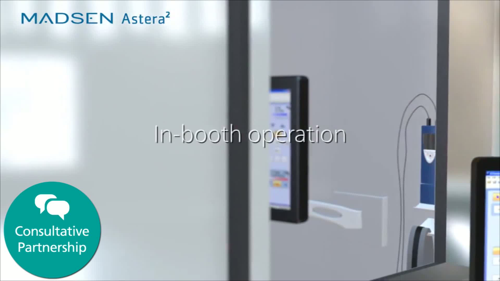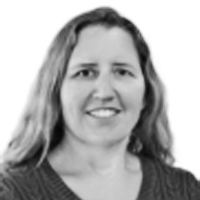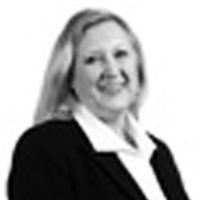Otosuite and the Audiology Practice
AudiologyOnline: Electronic Medical Record or EMR has been a huge movement across medical organizations over the last several years and that continues today. Why should Hearing Healthcare practices transition to electronic medical records or EMR?
Angela Flores, AuD: The federal government and our medical institutions are leading the Electronic Health Record (EHR) and EMR movement toward what the Centers Medicare and Medicaid describe as “Meaningful Use”. “Meaningful Use” is intended to be accomplished in three stages including basic adoption of EHR, care coordination and exchange of patient information and finally, the hope of improving healthcare outcomes. Basically, it’s a push to improve the quality and efficiency of patient healthcare information while at the same time maintaining or improving privacy and security of that healthcare information.
Currently, audiologists and dispensers are not part of the defined professions that can receive federal incentives to meet the goals of electronic health records or EHR. However, to effectively interact with hospitals and physicians we need to meet the same standards and, naturally, the goals of EHR also serve our profession, whether or not the federal government incentives us to meet them.
We also know that our patients expect a certain level of care in a timely manner. We are now living in a digital world so real-time access is part of their everyday experience and expectation.
AudiologyOnline: Can Otosuite® help with EMR transition?
Lance Brown: If you are looking to connect your audiology patient data to an existing EMR program, Otobase® is a database module that supplements Otosuite and integrates your clinic quickly, simply and securely.
Developing Otobase, we looked at the existing landscape of audiology, and a vast majority of them were using Noah. We wanted to develop an application that allowed professionals to utilize a tool that they are were already very familiar with, and simplify their workflow.
Most audiology software today is Noah compatible and therefore, compatible with Otobase. OTObase enables all Noah compatible equipment to communicate directly with the EMR/EHR.
Integrating with Otobase is seamless, users do not have to learn new software. They do not have to change workflows. They can take and utilize the same tools clinicians use today and automatically integrate into their EMR. With a simple click of a button, they can take the data that they collect within Noah, and send it to an EMR. Users will immediately notice time savings of about 15 minutes compared to their old methods of printing, scanning, etc.

AudiologyOnline: Can you suggest some other resources that further describe how Otosuite supports day-to-day audiology?
Angela: Because Otosuite is Noah-compatible, patient data loads quickly and test results (audiograms, tympanograms, OAE results, etc.) are automatically saved to the digital patient record in Noah. By using an integrated system to support the full patient journey, audiologists can streamline the workflow and spend more time counseling patients and families. The article Pediatric Care in the Digital Age provides a step-by-step comparison for testing and fitting children with standalone vs. pc-based equipment.
Jackie Phillips, AuD: Workflow efficiency is definitely one benefit. Integrated software and equipment help make the most of your time and hearing care expertise because Otosuite provides a single point of entry to conduct tests. It allows you to progress seamlessly from tympanometry to OAE and then to audiometry in a single, uninterrupted session. The course Computer Integration for the Modern Clinic describes the benefits of utilizing a computerized platform as well as provides a short tutorial on how to navigate the software.
Jeanette Fitzke, AuD: To Jackie’s point, having several pieces of equipment that work together optimizes your workflow and gives you more time to spend counseling or just getting to know your patients. Otosuite helps save time because everything you need is available in one platform. Audiometry For a New Era discusses the benefits of utilizing a PC-based audiometer such as the Madsen Astera². As mentioned, it’s an easy transition from the audiometer to other pieces of equipment such as probe microphone measures (PMM) all from one software platform. Otosuite even allows you to test and provide patient counseling in the booth because of touch screen control options that are available
AudiologyOnline: Can you provide some examples of tools within Otosuite that can help with new revenue streams or specializations?
Jeanette: It is not uncommon for audiologists to encounter patients who suffer from tinnitus and, sometimes, audiologists are the first healthcare provider the tinnitus patient sees. An audiometer with an integrated tinnitus test modality expands treatment and evaluation possibilities. Madsen Astera² is available with an optional tinnitus module. Other modules such as a specialized pediatric module are also available within Otosuite. These tools are available for clinicians who would like to specialize their practice. The course Tinnitus Applications Outside the Tinnitus Specialty Clinic is a good place to start if you are considering tinnitus care.
Angela: For professionals who sell hearing aids, this is one great feature: Otosuite makes it possible for the Aurical® fitting equipment to “talk to” some hearing instrument software. Verification is a prerequisite for achieving expected performance of amplification—and this new development makes verification even easier. Integration between Aurical and hearing instrument fitting software makes it possible to verify hearing instrument fittings automatically from within ReSound Aventa® using AutoRem and Phonak Target™ using TargetMatch. This new functionality with automated target-based fitting gives you an efficient way to streamline your fitting process and boost client satisfaction.
Keeley Moore, MA: How about serving patients beyond the four walls of your practice? Integration with Otosuite can also expand your reach. Otosuite is the backbone of this concept because it allows the audiologist to access and control the equipment remotely. Our text course, Teleaudiology 101, talks about ways to implement teleaudiology into your practice and what you need to start a teleaudiology program. The images below show examples of teleaudiology models that are discussed in the course.


Clinic on a cart (top photo) and teleaudiology using the CODEC (bottom photo).
AudiologyOnline: New technologies can be intimidating. What support beyond the coursed you have already mentioned, is available to assist professionals and practices the transition to Otosuite-compatible equipment?
Jackie: That is a great question. Our dedicated training team—sales representatives and audiologists—will help you take advantage of Otosuite’s tools and features to further streamline and personalize your workflow. Depending on your set-up, Otosuite can be customized to meet your individual needs or it can be standardized to defined protocols across larger organizations.
Lance: Specific to EMR and Otobase, Otometrics/Audiology Systems’ Software Integration Group or “SIG” can help bridge the gap between audiology and IT services allowing us to help with EMR/EHR integration. We can also help with data security, backup—aspects of audiology usually neglected.
AudiologyOnline: Let’s wrap this up with any additional tips for practice owners who are looking to invest in new instrumentation.
Lance: Connecting equipment to an EMR can be costly—you need to have the right connectors. If you just individually connect each piece of equipment, then you could imagine that could easily increase cost up to many thousands of dollars. With Otosuite-compatible equipment and Otobase, one connector connects your entire office to your EMR. Moreover, as I mentioned earlier, your dedicated SIG representative is available to assist and will be with you every step of the transition.
Jackie: There are a couple ways to maximize equipment purchases while minimizing the financial impact, such as joining a Hearing Instrument Manufacturer (HIM) or Buying Group. In addition to that, be sure to take advantage of complimentary consultations offered by your equipment vendor, your Otometrics/Audiology Systems representative. They will work with you to evaluate your professional and patient care needs. They can also help coordinate with your HIMs/Buying Group representative to find ways to maximize your purchasing power (i.e. applying equipment discounts that are included in your membership package). They can also walk you through available education, training, service and support programs to ensure you are getting the most out of your purchase.
Keeley: Here is a tip that may be a bit out-of-the box: Done right, you can use your test reports to brand your clinic. Otosuite® Reports ties all your test together and helps you create customized professional reports—in both digital and print media format. These reports are great visuals to have when counseling the patient and the patient’s family. Patients can also take this to their ENT or family practice physician. So, you have the added value of a marketing tool for your practice, to present you clinic’s brand in a very professional way.
Angela: Make sure to explore all the bells and whistles that come with your equipment. If you are looking to expand your practice or add more offerings, call your equipment manufacturer to understand how to optimize integrated tools you may already have (i.e. tinnitus questionnaires, verification tools, etc.).
Jeanette: That’s right—Otosuite software upgrades are available throughout the lifetime of your hardware, like the MADSEN Astera² or Aurical, for example. These software and firmware upgrades ensure that your equipment stays current and can keep up with the changing pace of your audiology clinic for years to come.
Thanks for your time everyone! For more information, visit www.audiologysystems.com/otosuite or the Otometrics/Audiology Systems Expo on AudiologyOnline.





